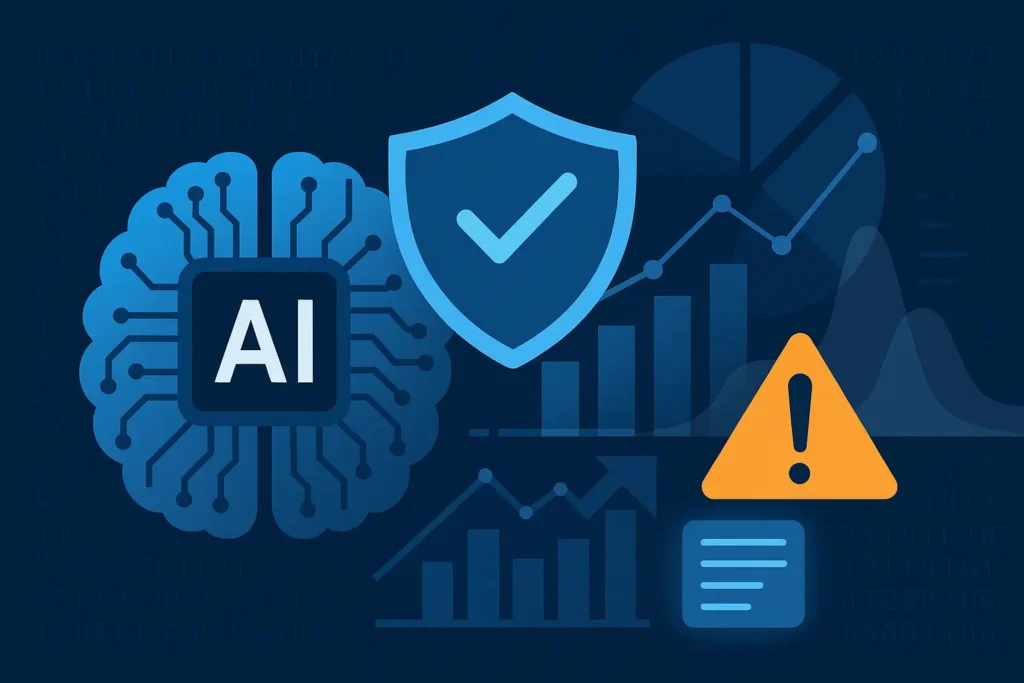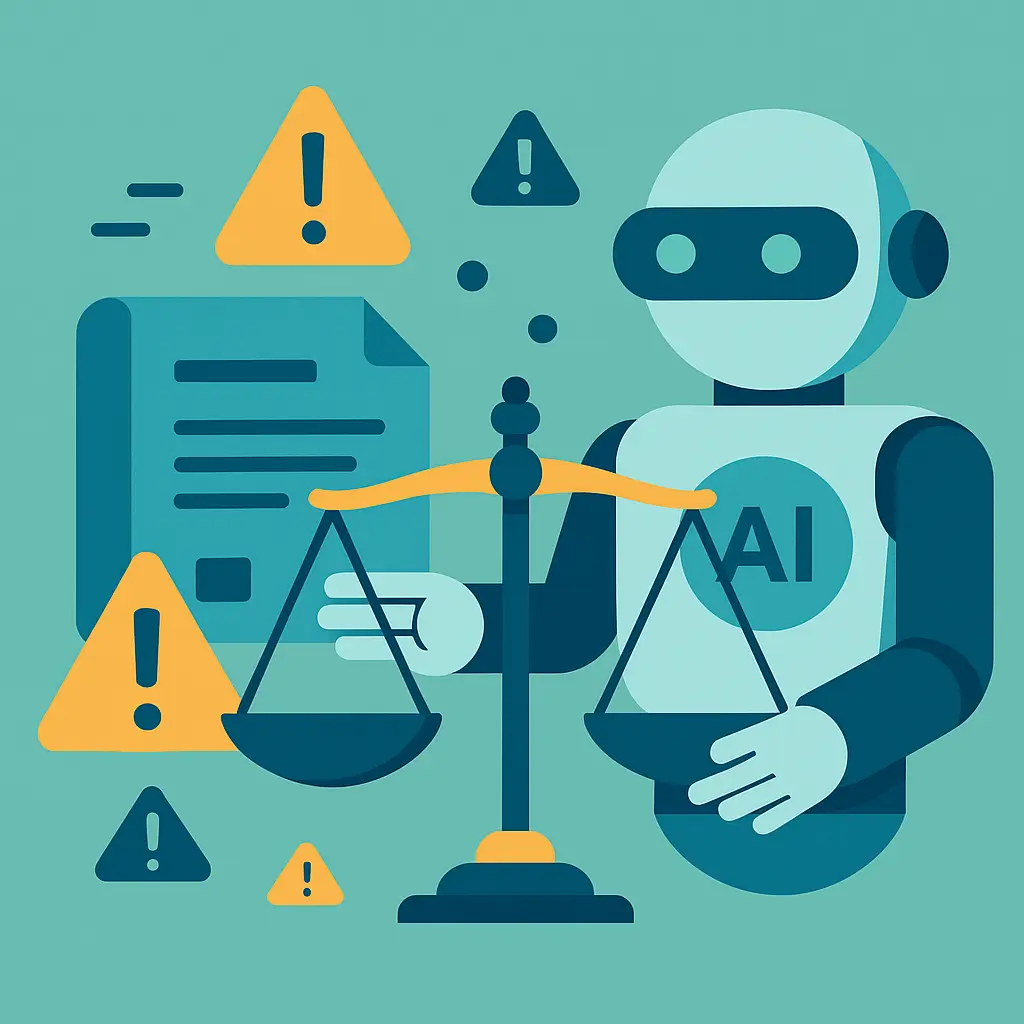
How AI Is Redefining Risk Management in the Age of Intelligent Systems
Artificial intelligence is no longer a future concern that can be delegated to “the tech team.” It is already embedded in credit decisions, admissions triage, clinical support tools, fraud monitoring, hiring screens, network security, and day-to-day operations across industries.
That reach brings both opportunity and risk. AI can improve accuracy, speed, and personalization, yet it can also introduce hidden bias, privacy violations, opaque failures, and new attack surfaces. For institutions under regulatory and accreditation scrutiny, that combination is not abstract. It affects legal exposure, reputation, and trust with students, customers, and the public.
The Effect of Artificial Intelligence on Risk Management was written to meet that moment. It is not a high-level manifesto about “ethical AI.” It is a practical handbook that treats AI risk as an operational program that can be designed, implemented, tested, and defended.
Table of Contents
Why AI Risk Is Different from Traditional IT Risk
Traditional software risk management assumes systems change relatively slowly and behave in predictable ways once deployed. AI systems do not always work like that. They:
- Learn from data that can shift over time
- Interact with people in ways that shape future behavior and feedback
- Depend on statistical patterns that can obscure who is helped and who is harmed
- Create outputs that are difficult to explain without dedicated interpretability tools
The book starts by clearly drawing this line. It explains why AI risk must be treated as a lifecycle, not a one-time approval. Models drift, data pipelines evolve, and external conditions change. A one-time sign-off is not enough.
From there, the book builds a structured framework for understanding harms such as bias and discrimination, privacy invasions, security vulnerabilities, unfair outcomes, workforce disruption, and accountability gaps. The emphasis is on how these risks actually surface in real systems, not just as abstract categories.
A SEC-Style View of AI Risk
One of the strengths of the book is that it borrows the discipline of securities style risk disclosure and applies it to AI. Instead of vague warnings, it frames AI risk in language that boards, regulators, and auditors recognize.
For example:
- Material risks associated with AI systems can arise from inaccurate or biased outputs, misuse of personal data, model or data breaches, operational dependence on untested automation, and failure to comply with evolving legal and regulatory requirements.
- Inadequate governance of AI may result in enforcement actions, loss of accreditation or licenses, litigation, and reputational harm, affecting financial performance and strategic goals.
This style of thinking forces organizations to identify where AI is actually used, what could reasonably go wrong, and how those risks are treated and monitored in practice. The rest of the book then supplies the operating tools to back up those statements.

From Principles to Practice: The Operating Program
Many AI documents repeat the same list of high-level values: fairness, accountability, transparency, privacy, and security. The question is how to turn those words into a working program.
The Effect of Artificial Intelligence on Risk Management does that by organizing the content around concrete building blocks:
- Model inventory and model risk tiers
A clear list of AI and machine learning systems, their purpose, data sources, owners, and risk tier. High-impact models are subject to stricter testing, monitoring, and governance. - TEVV: test, evaluate, verify, validate
The book explains how to move beyond one-off accuracy tests. It describes a cycle in which models are tested before deployment, evaluated using subgroup metrics, verified against requirements and policies, and validated in real-world conditions. - Governed release and human in the loop
Models do not simply move from development to production. They pass through release gates tied to documentation, fairness tests, privacy checks, and approvals. The book clarifies where human review is required, how overrides are recorded, and how these decisions are incorporated into the audit trail. - Post-deployment monitoring and drift detection
AI risk does not end at launch. The book introduces monitoring plans with specific metrics, thresholds, and owners. It shows how to track performance, fairness, and calibration over time, and what to do when thresholds are breached. - Change control and model updates
When a model is retrained, features are changed, or thresholds are adjusted, those changes are logged in a structured way. The book treats change control as a primary risk control, not an afterthought. - Evidence packs for reviewers
Each control is paired with evidence: data sheets, model cards, subgroup test reports, monitoring dashboards, and change control entries. The goal is simple. If a regulator, accreditor, or board committee asks, “Show us how you manage AI risk,” you can open a binder or dashboard, not improvise.
A Closer Look at Harms and How to Respond
One of the most useful sections covers potential harms in depth. Instead of treating “bias” or “privacy” as slogans, the book breaks them down.
Bias and unfair outcomes
The text explains how models can perpetuate or amplify existing inequities, especially when trained on historical data that reflect past discrimination, or when using features that quietly proxy for protected attributes.
It then links these harms to concrete practices:
- Subgroup testing with defined metrics such as equal opportunity difference, demographic parity difference, and calibration by group
- Thresholds and stop rules that block release if any group breaches fairness limits
- Change control entries that document what changed and how performance improved after remediation
The book also walks through an illustrative admissions triage case. A public university discovers that its model systematically disadvantages applicants from smaller, rural schools, not by intention but through an over-reliance on school-level context. The case shows how a pause, feature review, subgroup tests, and monitored re-release can correct the problem and create a better system.
Privacy and lawful data use
Privacy is handled in similarly concrete terms. The book links AI use to established principles such as purpose limitation, data minimization, storage limitation, and demonstrable accountability.
It covers:
- Unauthorized collection and silent repurposing of data
- Weak storage and retention practices that turn personal data into long-term liabilities
- Intrusive inference, where analytics reveal sensitive traits that the individual never disclosed
Readers are shown what “good” looks like: concise privacy notices for each use case, lawful bases documented, records of what is collected and for how long, privacy impact assessments before launch, and plans to delete or retrain models when the lawful basis changes.
Security and adversarial risk
On the security side, the book introduces adversarial examples, data poisoning, model theft, and abuse of AI-powered tools. It places these threats in the context of established security controls, so that AI risk becomes part of the same discipline used for cyber, not an isolated specialty.
Templates, Appendices, and Tools You Can Actually Use
A key differentiator is the volume of practical tools included. The appendices provide templates that can be dropped directly into a risk program:
- Data sheet templates that document provenance, coverage, gaps, and mitigation for each dataset
- Subgroup testing tables with thresholds and a stop rule that can be adapted to local policy
- Change control forms that summarize the pause, the fix, verification, and governance approval
- Monitoring plans that define owners, metrics, windows, alert rules, and reporting cadence
Additional appendices expand the toolkit further with:
- A model risk register template that aligns models to risk tiers and control sets
- An AEC “Risk to Action” worksheet that links identified risks to specific control activities and evidence
- A governance RACI that clarifies who is responsible, accountable, consulted, and informed for each part of the AI lifecycle
These artifacts make the difference between a policy that sounds good on paper and a program that works in practice.
AI Risk Management
To Download the PDF file, please enter your name and email
Who Will Benefit Most from the Book?
The content is written for readers who live at the intersection of risk, compliance, and operations. That includes:
- Board members and senior executives who need a clear view of AI risk and controls
- Risk, audit, and compliance leaders responsible for integrating AI into enterprise risk management
- Legal and privacy teams that must align AI uses with data protection and sector-specific rules
- Technical leaders who build and maintain AI systems need to align their work with governance expectations
- Accreditation and licensing teams that must demonstrate institutional control over emerging technology risks
The style is direct and accessible. Readers do not need to be machine learning engineers to follow the arguments, but technically minded staff will still find enough detail to take action.
How to Put the Book to Work
Organizations can use The Effect of Artificial Intelligence on Risk Management as a blueprint for a 90-day build-out of an AI risk program:- Stand up a basic model inventory and risk register.
- Choose two or three high-impact models and apply the TEVV guidance and subgroup tests.
- Implement change control, monitoring plans, and privacy documentation using the templates.
- Present a short AI risk briefing to the board or risk committee, supported by the evidence pack.
Why Now
Regulators, courts, accreditors, and the public are moving in the same direction. They expect institutions to understand how AI is used, what could go wrong, and what evidence exists that controls are operating. A “trust us” posture is no longer sufficient.
The Effect of Artificial Intelligence on Risk Management meets that expectation with a structured, evidence-oriented approach. It helps organizations reduce real risk, answer hard questions, and keep the benefits of AI without drifting into unmanaged exposure.
If you are responsible for risk and governance in an AI-enabled environment, this is the kind of guide that belongs on your desk and in your internal playbooks.
You can read more about The Effect of Artificial Intelligence on Risk Management and access the full text on AccreditationXpert.com.
Why This Matters
AI is already shaping decisions in admissions, finance, compliance, and security.
This book gives you a practical, evidence-focused framework to govern AI, manage risk, and satisfy regulators and accreditors.
Book a confidential strategy call today.











